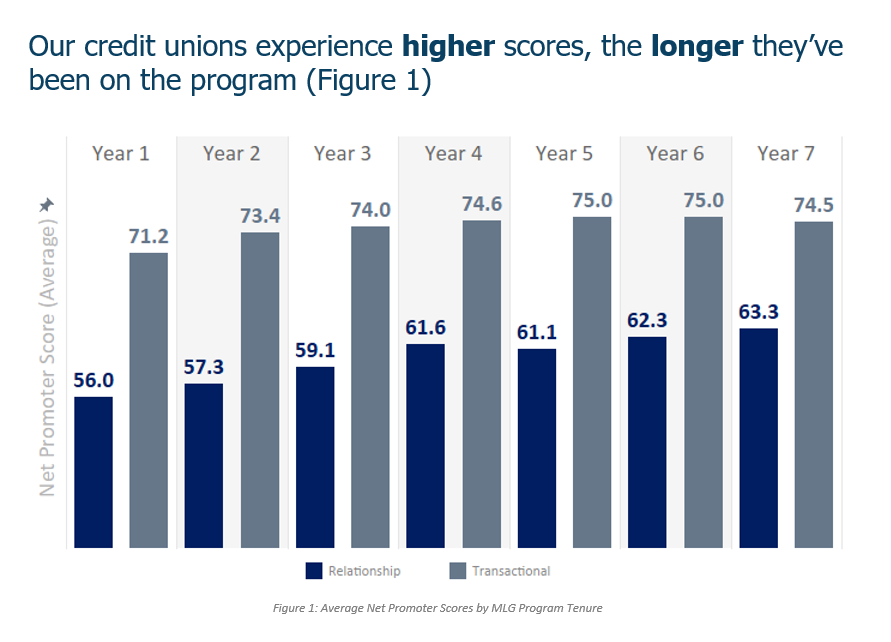Blog
How NPS Improves Over Time and Why It Matters for Credit Unions
Updated: August 5, 2025
As credit unions continue to focus on enhancing member experience, it’s essential to leverage data-driven insights to make impactful changes. One of the most effective ways to track improvements in member satisfaction is through the Net Promoter Score® (NPS). Recently, Member Loyalty Group (MLG) analyzed credit union data based on program tenure and observed how NPS evolved over time. The results were clear—credit unions that gathered, responded to, and acted upon member feedback saw significant increases in NPS, demonstrating stronger loyalty and engagement.
Understanding NPS Growth Over Time
When credit unions first implement an NPS program, it’s common to experience lower-than-average scores in the initial stages. As the program matures and credit unions gather and act upon member feedback, their NPS tends to improve. MLG’s analysis revealed that credit unions generally see their NPS increase beginning in the second year of the program, with continued gains as they progress.
What Contributes to NPS Improvement?
Several factors influence whether a credit union’s NPS will improve over time. Successful credit unions typically have systems in place that allow their teams to efficiently gather, share, and act on member feedback across the organization. Here are the key contributors to NPS improvement:
- Feedback-Driven Culture: Credit unions that cultivate a culture of feedback, where teams regularly share and respond to member input, are more likely to make meaningful changes that enhance loyalty.
- Open-Ended Feedback: In addition to NPS scores, analyzing open-ended feedback from members allows credit unions to pinpoint specific areas of improvement, leading to more targeted enhancements.
- Closing the Feedback Loop: Responding to members and closing the feedback loop ensures that member concerns are addressed, reinforcing trust and deepening loyalty.

The Lagging Nature of NPS
It’s important to note that NPS is often a lagging indicator. Changes in member experience may not immediately reflect in NPS, as the score is influenced by a series of interactions over time. A single positive interaction may not instantly boost a member’s NPS if previous experiences were less favorable.
However, by tracking NPS over an extended period, credit unions can identify trends that reflect overall improvements in member satisfaction. Investing in a robust member experience program takes time, but the payoff is clear: as credit unions continue to gather and act on member feedback, NPS increases and member loyalty strengthens. If your credit union is looking for ways to improve NPS and overall member satisfaction, leveraging data-driven insights and building a culture of feedback are essential steps toward success.
At MLG, we offer participating credit unions a variety of tools to help them improve their NPS. This includes opportunities to engage in discussions with peers, attend webinars, and learn best practices for managing their member experience programs. Additionally, our Partner Success Team is available to help our credit unions make the most of their feedback, offering insights on how to close the feedback loop and foster member-centricity across all levels of the organization.

Ready to boost your NPS and elevate your member experience? Contact us at [email protected] or current customers may visit our Member Connect platform for insights and tools that can help drive their growth.


